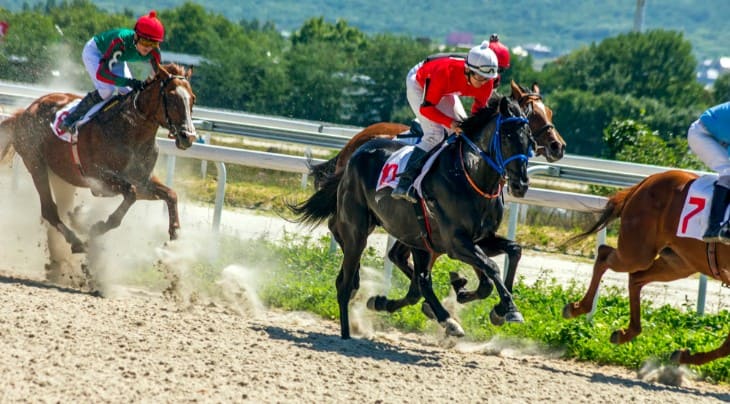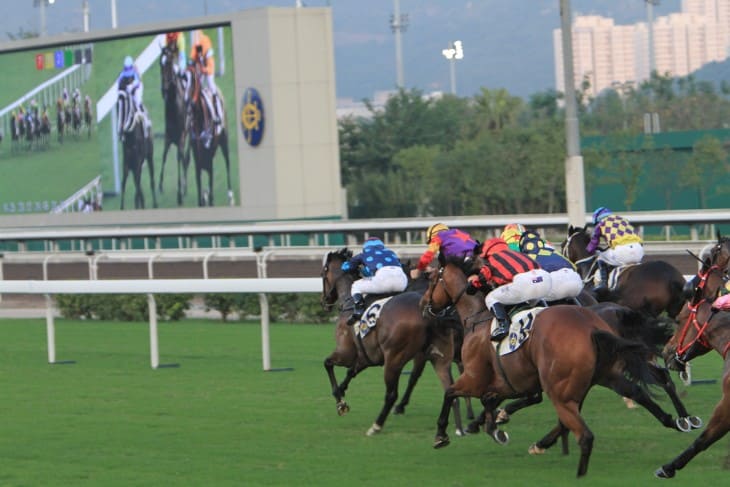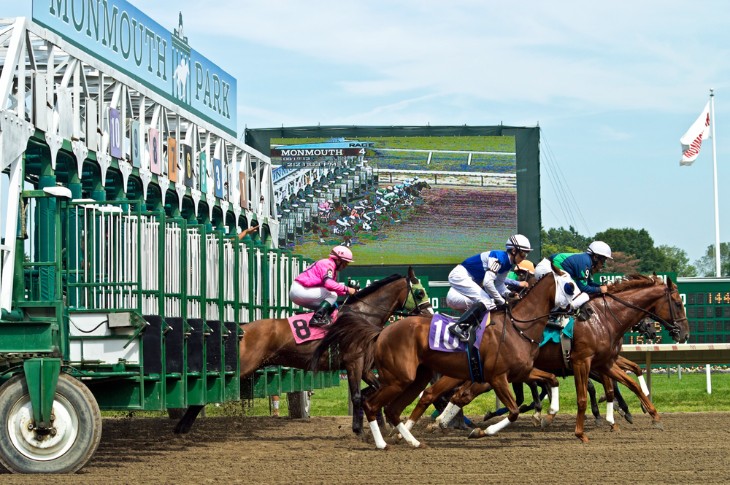What is a Bumper in Horse Racing?
In horse racing, a "bumper" refers to a type of race that is also known as a National Hunt Flat Race. These races are typically held under National Hunt rules, which are a set of rules and regulations for jumps racing, commonly seen in countries like the United Kingdom and Ireland.
What sets bumpers apart from other horse races is that they are flat races specifically designed for National Hunt horses. National Hunt horses are those trained for steeplechase and hurdle racing, which involve jumping over obstacles like fences and hurdles. Bumpers are used as a starting point for young National Hunt horses or as a way to give horses experience without the added complexity of jumping over obstacles.
In this short article, I will give you an insight into this type of horse race and explain all of its specifics. Let’s start:
Key Characteristics of Bumpers
Bumpers are a unique category of horse races that offer a platform for young National Hunt horses to gain experience in a controlled and competitive environment. These races help horses develop their racing skills and serve as a stepping stone to more challenging National Hunt races involving jumps and obstacles. Let’s check some of the key characteristics:
- Distance and Conditions: Bumpers typically vary in distance, but they are usually run over a relatively short distance, often between 1 mile (1609 meters) and 2 miles (3218 meters). The specific distance is determined by the racecourse and race organizers. Bumper races can also vary in terms of conditions, with some being for specific age groups or genders, while others are open to a wider range of horses.
- Weight Carried: Horses in bumper races carry weight, which is determined by the race conditions and any handicaps assigned by the racing authorities. The weight carried is intended to create a level playing field, with more accomplished or experienced horses often carrying more weight to equalize their chances with less experienced competitors.
- Jockey Skills: Bumper races require skilled jockeys who can navigate the flat track and position their horses strategically to compete effectively. Jockeys use tactics such as drafting behind other horses to save energy or making well-timed moves to challenge for the lead.
- Starting Stalls: In some bumper races, especially those with larger fields, horses may start from stalls similar to those used in flat racing. This allows for a more controlled and orderly start, which is particularly important in flat races.
- Breeding and Pedigree: While bumpers are primarily flat races for National Hunt horses, they often involve horses with strong National Hunt breeding and pedigree. This means that many of the horses in bumpers are specifically bred for jump racing but gain initial race experience on the flat.
- Transition to Jumps Racing: As mentioned earlier, bumpers serve as a transition point for many National Hunt horses. Once a horse has gained experience and confidence in bumpers, it may progress to races that involve hurdles or fences. The experience gained in bumpers helps horses prepare for the challenges of jumps racing.
- Betting and Punting: Bumper races are a popular betting option for horse racing enthusiasts. Punters analyze factors such as the horse's form, jockey, trainer, and breeding to make informed betting decisions. Like other horse races, bumpers offer betting opportunities, including win, place, and each-way bets.
- Developmental Opportunities: Bumpers provide trainers and owners with a valuable opportunity to assess a horse's racing potential and temperament. It allows them to gauge a horse's readiness for jumps racing or identify areas for improvement.

Bumper Events
Bumper races, also known as National Hunt Flat Races, are typically not associated with high-profile or major events in the same way as some other types of horse races. Instead, they are often seen as developmental or preparatory races for young National Hunt horses, helping them gain experience before moving on to more prestigious jumps races. As a result, you won't find the same level of fanfare and attention for bumper races as you would for major events like The Grand National or the Cheltenham Festival.
However, there are still some notable bumper races that are regularly featured at various racecourses, and these may attract a fair amount of attention within the National Hunt racing community. Some of the key bumper races in the United Kingdom and Ireland include:
- Champion Bumper: The Weatherbys Champion Bumper is a Grade 1 National Hunt flat race held annually at the Cheltenham Festival in the United Kingdom. It is one of the most prestigious bumper races and showcases some of the top young National Hunt horses.
- Aintree Bumper: This is a Grade 2 bumper race held at Aintree Racecourse during the Grand National meeting. It's one of the prominent bumpers in the UK.
- Punchestown Bumper: The Champion INH Flat Race at the Punchestown Festival in Ireland is another high-profile bumper race. It often features top Irish-trained National Hunt horses.
- Fairyhouse Bumper: The Royal Bond Flat Race at Fairyhouse is a notable National Hunt flat race in Ireland. It's often seen as a good indicator of potential future stars in jumps racing.
- Listed and Graded Bumpers: Throughout the National Hunt season, various racecourses host Listed and Graded bumper races, which attract competitive fields and showcase emerging talent. These races may vary in terms of prestige and prize money.
While these are some of the more prominent bumper races, it's important to note that the main focus of National Hunt racing tends to be on hurdle and steeplechase events. Bumper races are considered a starting point in a horse's career and are used to build experience and confidence before transitioning to jumps racing. Consequently, they may not receive as much attention as the established hurdles and steeplechases that make up the core of the National Hunt racing calendar.
Importance of Bumpers
Bumper races are essential in the development of National Hunt horses, providing them with valuable early racing experience, skill development, and a platform to showcase their potential. They serve as a foundation for the future success of many horses in jumps racing and contribute to the overall vitality of the National Hunt racing industry.
- Early Racing Experience: Bumper races provide young National Hunt horses with their first exposure to the racing environment. They get a taste of the racecourse atmosphere, the starting stalls, and the competitiveness of racing without having to navigate hurdles or fences.
- Skill Development: Young horses need to learn various racing skills, such as racing in a group, maintaining speed, responding to jockey cues, and conserving energy. Bumpers allow them to hone these skills on a flat track before progressing to more complex jumps racing.
- Assessment of Potential: Trainers and owners use bumper races to assess a horse's racing potential and temperament. They can evaluate a horse's behaviour under race conditions and determine whether it has the potential to excel in National Hunt racing.
- Gradual Progression: Bumper races serve as a natural progression for young horses. After gaining experience in bumpers, horses can move on to hurdles or steeplechases. This gradual approach helps horses build confidence and competence, reducing the risk of accidents or injuries.
- Learning Race Tactics: Horses and jockeys in bumper races learn race tactics, such as when to make a move, how to position themselves in the field, and how to respond to other horses' actions. These tactical lessons are valuable for future races.
- Enhancing Market Value: A successful performance in bumper races can significantly increase a horse's market value. Horses that show promise in bumpers may attract interest from potential buyers or syndicates looking to invest in future racing prospects.
- Fan Engagement: While bumper races may not be as high-profile as some other racing events, they still provide racing enthusiasts with opportunities to follow and support emerging talent. Fans often enjoy watching the progression of horses from their bumper debut to jumps racing success.
- Nurturing Future Stars: Many top-class National Hunt horses, such as Gold Cup winners and Champion Hurdle winners, began their careers in bumper races. Bumpers offer the first glimpse of potential future stars in the sport.
- Safety Considerations: Racing authorities prioritize the safety of both horses and jockeys. Bumper races help ensure that young horses are adequately prepared for the physical and mental demands of jumps racing, reducing the risk of injuries.

Bumper Races and Betting Opportunities
What is a bumper in horse racing? The comprehensive answer can’t be given without taking a look at its betting potential. Bumper races definitely offer betting opportunities for horse racing enthusiasts. While these races may not attract as much betting action as some of the more prestigious jumps races, they still provide a platform for punters to wager on horses and potentially win money.
- Basic Betting Types: Betting on bumper races includes the standard types of bets commonly found in horse racing. These bets include:
- Win: Betting on the horse you believe will finish first.
- Place: Betting on a horse to finish either first or second, depending on the number of runners and the specific race conditions.
- Each-Way: Combining a win bet and a place bet on the same horse. If the horse wins, both bets pay. If the horse places but doesn't win, the place part of the bet pays.
- Exacta/Quinella: Betting on the first two horses to finish in the exact order (Exacta) or in any order (Quinella).
- Trifecta: Betting on the first three horses to finish in the exact order.
- Superfecta: Betting on the first four horses to finish in the exact order.
- Form Analysis: Punters can analyze the past performances and form of the horses competing in bumper races. This includes looking at recent race results, the horse's performance in training, and any notable achievements or setbacks.
- Jockey and Trainer Influence: The reputation and track record of the jockey and trainer can be important factors in betting decisions. Experienced jockeys and successful trainers may increase the confidence of bettors.
- Pedigree: In many cases, National Hunt horses that compete in bumper races have pedigrees geared toward jumps racing. Punters may consider the horse's breeding when making their bets, as it can provide insights into its potential for future success in hurdles or steeplechases.
- Track Conditions: Just like in other types of horse racing, track conditions can play a significant role. Some horses may perform better on certain types of ground (e.g., firm, soft) or on specific tracks. Punters often take this into account when making their selections.
- Betting Markets: The size and competitiveness of the field can influence the betting markets in bumper races. Larger fields can lead to more diverse odds, potentially offering better value for bettors who do their research.
- Early Indicators: Successful performances in bumper races can be early indicators of a horse's potential in future jumps races. Punters who spot promising horses in bumpers may follow their careers and bet on them in more prestigious events.
- Betting Tips and Resources: Punters can access various resources such as racing publications, online forums, and tipsters to gather insights and tips for betting on bumper races. These resources can help bettors make more informed decisions.
Summary
Bumper races serve as an essential developmental stage for young National Hunt horses, offering them early racing experience on flat tracks before transitioning to jumps racing. While they may not garner as much public attention as major jumps events, bumper races are popular within the National Hunt racing community. They provide valuable betting opportunities for enthusiasts who can analyze form, pedigree, jockey-trainer combinations, and track conditions to make informed wagers. Additionally, successful performances in bumper races often serve as early indicators of a horse's potential in future, more prestigious races, making them a significant aspect of the National Hunt racing landscape.
For more information:








